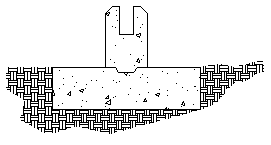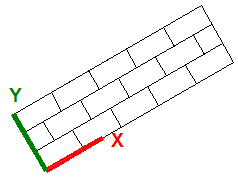A hatch object displays a standard pattern of lines and dots used to highlight an area, or to identify a material, such as steel or concrete. Hatch objects can also display a solid fill or a gradient fill.
Create hatches and fills with the HATCH command. The following illustration includes a solid fill, a gradient fill, and a hatch pattern. The hatch pattern has a hatch background color assigned to it.

Hatches and fills do not have to be bounded. In the following illustration, the concrete hatches are bounded, while the earth hatches are unbounded.

By default, bounded hatches are associative, which means that the hatch object is associated with the hatch boundary objects, and changes to the boundary objects are automatically applied to the hatch.

To maintain associativity, the boundary objects must continue to completely enclose the hatch.
The alignment and orientation of a hatch pattern is determined by the current location and orientation of the user coordinate system, in addition to controls in the user interface.

Moving or rotating the UCS is an alternate method for controlling hatch patterns.
Alternatively, solid-filled areas can be created using
- 2D solids (SOLID)
- Wide polylines (PLINE)
- Donuts (DONUT)